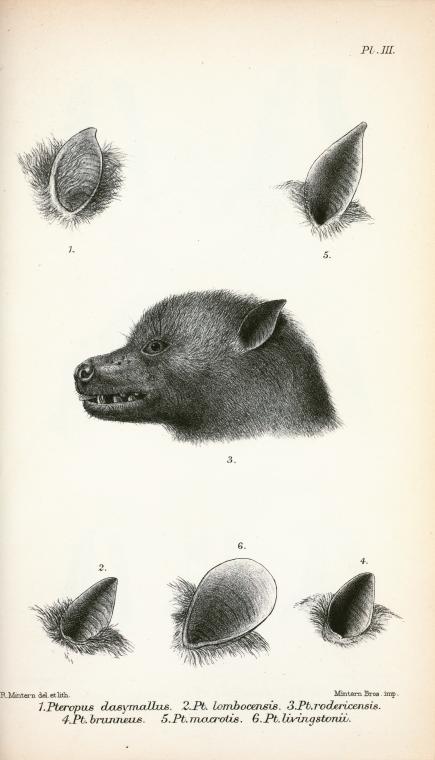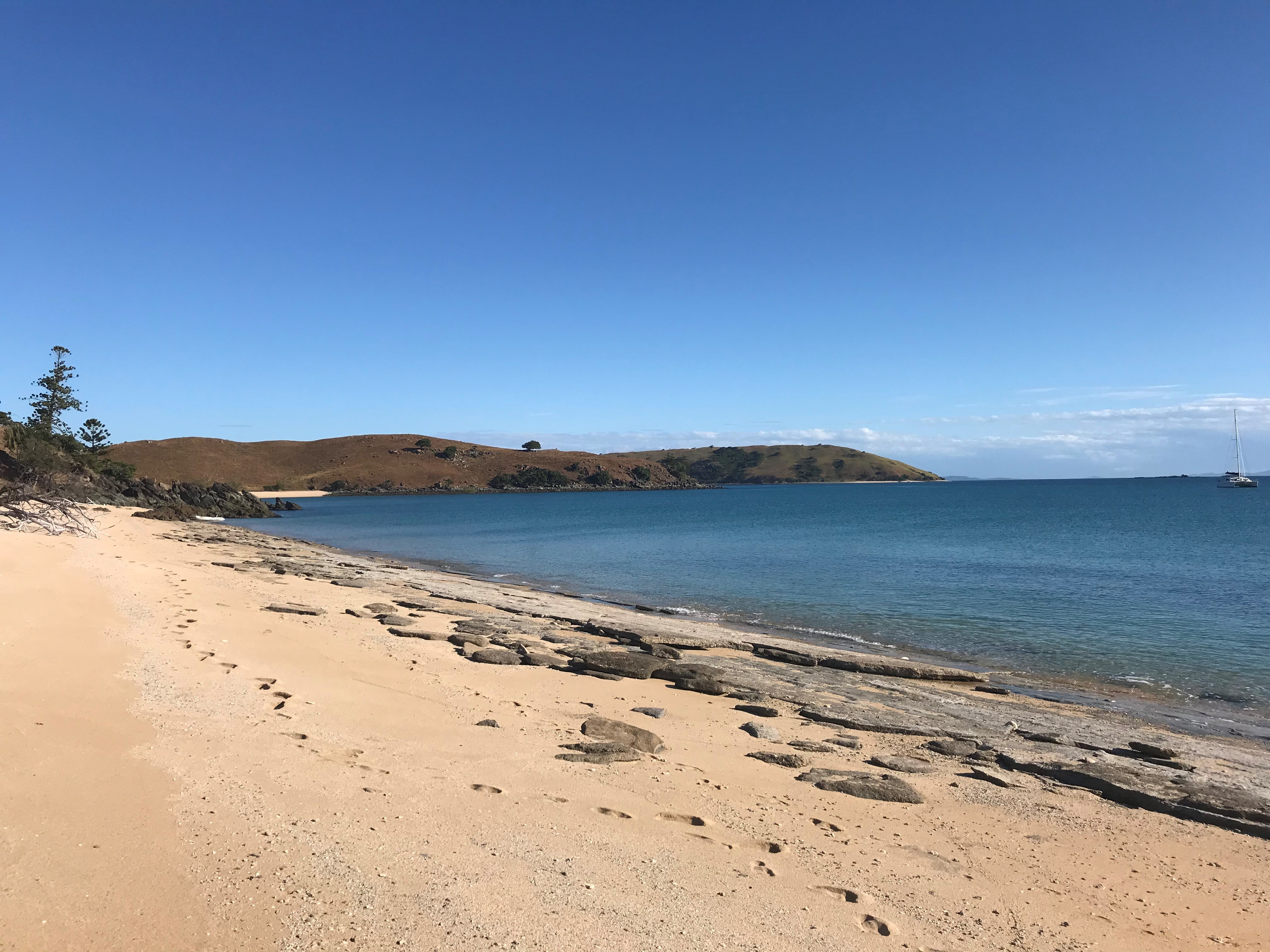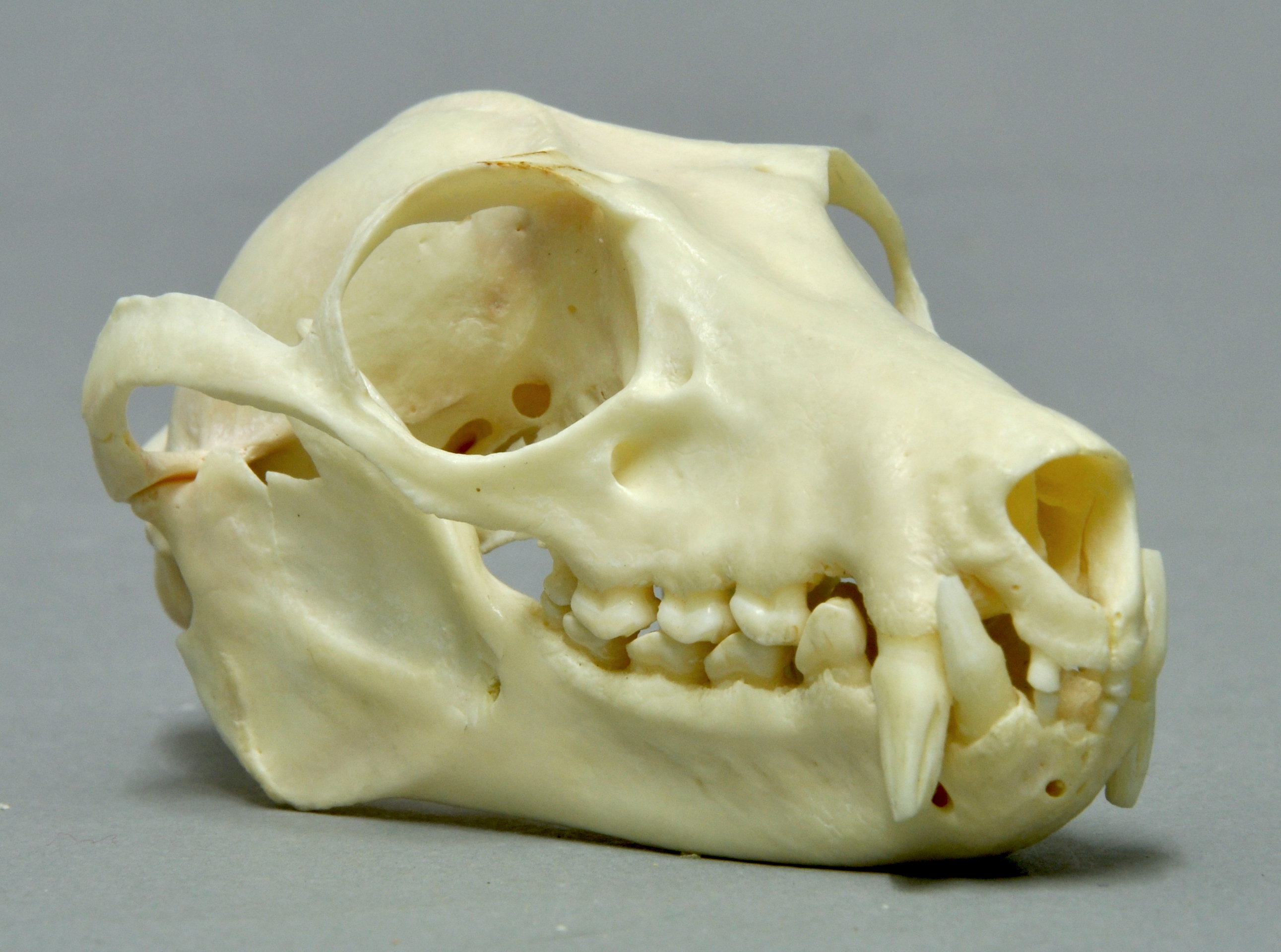|
Dusky Flying Fox
''Pteropus brunneus'' is an extinct species of flying fox in the family Pteropodidae. It was said to be found at Percy Island, southeast of Mackay, Queensland, off the northeast coast of Australia. Taxonomy A single male specimen was collected in 1874 and deposited at the British Museum of Natural History (BMNH), this skin and skull was estimated to be a near adult. The description for this was published by George Edward Dobson in 1878, in a revision of chiropteran specimens held at the museum. Further details were provided when the specimen was again examined in 1912. Since that record, no further documentation is known of this species; the specimen is still located at BMNH. The description was re-evaluated in the late twentieth century, and recognition as a species is maintained in the third edition of ''The Mammals of Australia'' ('' National Photographic Index of Australian Wildlife'', 2008). Speculation on the taxon includes the proposition the specimen may be an undi ... [...More Info...] [...Related Items...] OR: [Wikipedia] [Google] [Baidu] |
George Edward Dobson
George Edward Dobson FRS FLS FZS (4 September 1848 at Edgeworthstown, County Longford, Ireland – 26 November 1895) was an Irish zoologist, photographer and army surgeon. He took a special interest in bats, describing many new species, and some species have been named after him. Biography Dobson was the eldest son of Parke Dobson Proceedings of the Royal Society. Volume 59. p 15. Royal Society. 1896 and was educated at the Royal School Enniskillen and then at Trinity College, Dublin. He gained the degrees of Bachelor of Arts in 1866, Bachelor of Medicine, Bachelor of Surgery and Master of Surgery in 1867 and Master of Arts in 1875. He became an army surgeon after 1867 serving in India and rose to the position of surgeon major. In 1868 he visited the Andaman Islands, collecting zoological specimens for the Indian Museum along with Wood-Mason, and in May 1872 he made ethnological and photographic studies of the Andamanese peoples. Around 1878, he became curator of the Royal ... [...More Info...] [...Related Items...] OR: [Wikipedia] [Google] [Baidu] |
Pelage
Fur is a thick growth of hair that covers the skin of mammals. It consists of a combination of oily #Guard hair, guard hair on top and thick #Down hair, underfur beneath. The guard hair keeps moisture from reaching the skin; the underfur acts as an thermal insulation, insulating blanket that keeps the animal warm. The fur of mammals has many uses: protection, sensory purposes, waterproofing, and camouflaging, with the primary usage being thermoregulation. The types of hair include * ''definitive'', which may be moulting, shed after reaching a certain length; * ''vibrissae'', which are sensory hairs and are most commonly whiskers; * ''pelage'', which consists of guard hairs, under-fur, and awn hair; * ''spine (zoology), spines'', which are a type of stiff guard hair used for defense in, for example, porcupines; * ''bristles'', which are long hairs usually used in visual signals, such as the mane (lion), mane of a lion; * ''velli'', often called "down fur", which insulates new ... [...More Info...] [...Related Items...] OR: [Wikipedia] [Google] [Baidu] |
Mammals Described In 1878
Mammals () are a group of vertebrate animals constituting the class Mammalia (), characterized by the presence of mammary glands which in females produce milk for feeding (nursing) their young, a neocortex (a region of the brain), fur or hair, and three middle ear bones. These characteristics distinguish them from reptiles (including birds) from which they diverged in the Carboniferous, over 300 million years ago. Around 6,400 extant species of mammals have been described divided into 29 orders. The largest orders, in terms of number of species, are the rodents, bats, and Eulipotyphla (hedgehogs, moles, shrews, and others). The next three are the Primates (including humans, apes, monkeys, and others), the Artiodactyla ( cetaceans and even-toed ungulates), and the Carnivora (cats, dogs, seals, and others). In terms of cladistics, which reflects evolutionary history, mammals are the only living members of the Synapsida (synapsids); this clade, together wit ... [...More Info...] [...Related Items...] OR: [Wikipedia] [Google] [Baidu] |
Mammal Extinctions Since 1500
Mammals () are a group of vertebrate animals constituting the class Mammalia (), characterized by the presence of mammary glands which in females produce milk for feeding (nursing) their young, a neocortex (a region of the brain), fur or hair, and three middle ear bones. These characteristics distinguish them from reptiles (including birds) from which they diverged in the Carboniferous, over 300 million years ago. Around 6,400 extant species of mammals have been described divided into 29 orders. The largest orders, in terms of number of species, are the rodents, bats, and Eulipotyphla (hedgehogs, moles, shrews, and others). The next three are the Primates (including humans, apes, monkeys, and others), the Artiodactyla (cetaceans and even-toed ungulates), and the Carnivora (cats, dogs, seals, and others). In terms of cladistics, which reflects evolutionary history, mammals are the only living members of the Synapsida (synapsids); this clade, together with Sauropsida ... [...More Info...] [...Related Items...] OR: [Wikipedia] [Google] [Baidu] |
Ronald Strahan
Ronald Strahan (1922–2010) was a zoologist, historian and author of works on the fauna of Australia. Strahan graduated from the University of Western Australia in 1947, furthering his studies at Oxford and other universities in Hong Kong and New South Wales. He became director of Taronga Zoo in 1967 and joined the staff of the Australian Museum in 1974. He was the editor of major publications assembled by museum, and extensively involved in oversight of the National Photographic Index of Australian Wildlife which included ''The Complete Book of Australian Birds'' and ''The Complete Book of Australian Mammals''. Strahan also created travelling exhibitions, and wrote a series of essays on the history and work of the Australian Museum, ''Rare and Curious Specimens''. His own publications include works on Australian fauna, and his instigated a major collection of bird song at the Australian Museum. Strahan's second marriage was to the wildlife artist Pamela Conder. In the 1994 Qu ... [...More Info...] [...Related Items...] OR: [Wikipedia] [Google] [Baidu] |
Cyclone
In meteorology, a cyclone () is a large air mass that rotates around a strong center of low atmospheric pressure, counterclockwise in the Northern Hemisphere and clockwise in the Southern Hemisphere as viewed from above (opposite to an anticyclone). Cyclones are characterized by inward-spiraling winds that rotate about a zone of low pressure. The largest low-pressure systems are polar vortices and extratropical cyclones of the largest scale (the synoptic scale). Warm-core cyclones such as tropical cyclones and subtropical cyclones also lie within the synoptic scale. Mesocyclones, tornadoes, and dust devils lie within smaller mesoscale. Upper level cyclones can exist without the presence of a surface low, and can pinch off from the base of the tropical upper tropospheric trough during the summer months in the Northern Hemisphere. Cyclones have also been seen on extraterrestrial planets, such as Mars, Jupiter, and Neptune. Cyclogenesis is the process of cyclone formation and ... [...More Info...] [...Related Items...] OR: [Wikipedia] [Google] [Baidu] |
Northumberland Islands
The Northumberland Islands are a scattered island chain off the eastern coast of Queensland, Australia. Geography and history The Northumberland Islands are to the south-east of the city of Mackay roughly between the latitudes 21°S and 22°S. All islands are of the continental type. The island group was named by James Cook during his historic voyage along Australia's eastern seaboard in 1770, after the First Duke of Northumberland, Hugh Percy. Both Cook and Matthew Flinders make note of the island group in their journals, Cook describing them as such: In 1855, a botany expedition led by naturalist Frederick Strange visited the islands on his ship ''Vision''. Four of the expedition were killed by Aboriginal people at Middle Percy Island. Those killed were Frederick Strange and his assistant Richard Spinks, William Spurling (ship's mate) and Andrew Gittings (ship's cook and steward). Captain Chimmo of the Royal Navy vessel , sailed to the island and conducted an investig ... [...More Info...] [...Related Items...] OR: [Wikipedia] [Google] [Baidu] |
Pteropodid
Megabats constitute the Family (biology), family Pteropodidae of the Order (biology), order Chiroptera (bats). They are also called fruit bats, Old World fruit bats, or—especially the genus, genera ''Acerodon'' and ''Pteropus''—Pteropus, flying foxes. They are the only member of the Superfamily (taxonomy), superfamily Pteropodoidea, which is one of two superfamilies in the suborder Yinpterochiroptera. Internal divisions of Pteropodidae have varied since Subfamily, subfamilies were first proposed in 1917. From three subfamilies in the 1917 classification, six are now recognized, along with various Tribe (biology), tribes. As of 2018, 197 species of megabat had been described. The leading theory of the evolution of megabats has been determined primarily by genetic data, as the fossil record for this family is the most fragmented of all bats. They likely evolved in Australasia, with the common ancestor of all living pteropodids existing approximately 31 million years ago. M ... [...More Info...] [...Related Items...] OR: [Wikipedia] [Google] [Baidu] |
Uropatagium
The patagium (plural: patagia) is a membranous body part that assists an animal in obtaining lift when gliding or flight. The structure is found in extant and extinct groups of flying and gliding animals including bats, birds, some dromaeosaurs, pterosaurs, gliding mammals, some flying lizards, and flying frogs. The patagium that stretches between an animal's hind limbs is called the uropatagium (especially in bats) or the interfemoral membrane. Bats In bats, the skin forming the surface of the wing is an extension of the skin of the abdomen that runs to the tip of each digit, uniting the forelimb with the body. The patagium of a bat has four distinct parts: #Propatagium: the patagium present from the neck to the first digit. #Dactylopatagium: the portion found within the digits. #Plagiopatagium: the portion found between the last digit and the hindlimbs. #Uropatagium: the posterior portion of the flap between the two hindlimbs. Pterosaurs In the flying pterosaurs, the patagi ... [...More Info...] [...Related Items...] OR: [Wikipedia] [Google] [Baidu] |
Flying Fox
''Pteropus'' (suborder Yinpterochiroptera) is a genus of megabats which are among the largest bats in the world. They are commonly known as fruit bats or flying foxes, among other colloquial names. They live in South Asia, Southeast Asia, Australia, East Africa, and some oceanic islands in the Indian and Pacific Oceans. There are at least 60 extant species in the genus. Flying foxes eat fruit and other plant matter, and occasionally consume insects as well. They locate resources with their keen sense of smell. Most, but not all, are nocturnal. They navigate with keen eyesight, as they cannot echolocate. They have long life spans and low reproductive outputs, with females of most species producing only one offspring per year. Their slow life history makes their populations vulnerable to threats such as overhunting, culling, and natural disasters. Six flying fox species have been made extinct in modern times by overhunting. Flying foxes are often persecuted for their real or ... [...More Info...] [...Related Items...] OR: [Wikipedia] [Google] [Baidu] |
Pteropus Mariannus
The Mariana fruit bat (''Pteropus mariannus''), also known as the Mariana flying fox, and the ''fanihi'' in Chamorro, is a megabat found only in the Mariana Islands and Ulithi (an atoll in the Caroline Islands). Habitat loss has driven it to endangered status, and it is listed as threatened by the US Fish and Wildlife Service. Poachers and food hunters, other animals, and natural causes have led to the decline. Description The Mariana fruit bat is a mid-sized bat which weighs , and has a forearm length of 5.3 to 6.1 in (13.4 to 15.6 cm). Males of the species are slightly larger in size than the females. Their abdomens are colored from black to brown, while also having gray hairs. The mantle and the neck are a brighter brown to golden brown color and the head varies from brown to black. Their ears are rounded and their eyes large, giving them the features of a canid, so many megabats are called flying foxes. Threats The bat is considered a culinary delicacy by Chamor ... [...More Info...] [...Related Items...] OR: [Wikipedia] [Google] [Baidu] |
Pteropus
''Pteropus'' (suborder Yinpterochiroptera) is a genus of megabats which are among the largest bats in the world. They are commonly known as fruit bats or flying foxes, among other colloquial names. They live in South Asia, Southeast Asia, Australia, East Africa, and some oceanic islands in the Indian and Pacific Oceans. There are at least 60 Extant taxon, extant species in the genus. Flying foxes eat fruit and other plant matter, and occasionally consume insects as well. They locate resources with their keen sense of smell. Most, but not all, are nocturnality, nocturnal. They navigate with keen eyesight, as they cannot Animal echolocation, echolocate. They have R/K selection theory#K-selection, long life spans and low reproductive outputs, with females of most species producing only one offspring per year. Their slow life history makes their populations vulnerable to threats such as Overexploitation, overhunting, culling, and natural disasters. Six flying fox species have been ... [...More Info...] [...Related Items...] OR: [Wikipedia] [Google] [Baidu] |







